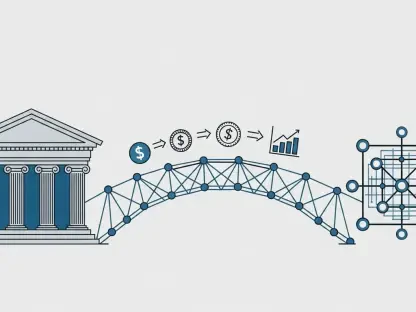What if a video of a trusted cryptocurrency leader passionately endorsing a new token lands in your inbox, only to later reveal itself as a meticulously crafted fake? Deepfakes—AI-generated content that mimics real voices and faces—have exploded into a pressing threat, particularly within the crypto industry. This alarming reality, where fraudsters can impersonate influential figures with chilling accuracy, strikes at the heart of trust in digital spaces. The rapid rise of such technology demands urgent attention, as scams proliferate and losses mount, leaving both individuals and platforms vulnerable.
The significance of this issue cannot be overstated. With financial damages already exceeding $200 million in the first quarter of this year, the crypto sector faces a crisis that erodes confidence in an industry built on decentralized ideals. Beyond mere numbers, the personal impact of falling for a deepfake scam—whether through a forged video or a cloned voice—can be devastating. This story explores how traditional defenses are failing and whether decentralized networks, powered by community-driven innovation, might offer a viable path to combat this escalating problem.
Why Deepfakes Are Everyone’s Concern
The crypto world thrives on trust, yet deepfakes shatter that foundation by enabling fraudsters to impersonate leaders with uncanny precision. A single fabricated video of a prominent figure can mislead thousands into fraudulent investments, as seen in numerous scams targeting high-profile names. This pervasive issue extends beyond mere financial trickery, challenging the very authenticity of online interactions in a space where credibility is paramount.
Victims often find themselves blindsided, unable to distinguish between genuine content and AI-crafted illusions. The emotional toll of such deception, coupled with significant monetary losses, underscores a growing unease among users. As these attacks become more sophisticated, the urgency to address them intensifies, pushing the industry to seek robust solutions that can restore faith in digital communications.
The Surge of AI Fraud in Crypto Markets
Statistics paint a grim picture: voice phishing, or vishing, incidents have surged by 28% year-over-year in the third quarter of this year, while deepfake content is projected to reach 8 million pieces by year-end. These numbers reflect a relentless wave of AI-driven fraud that has already cost the crypto industry dearly, with losses topping $200 million in just the first three months. Such figures highlight a crisis that threatens to destabilize an ecosystem reliant on user confidence.
Beyond the financial wreckage, regulatory bodies are stepping in with measures like the EU AI Act, which mandates clear labeling of AI-generated content to curb deception. Real-world cases, such as deepfake videos impersonating leaders like Changpeng Zhao and Vitalik Buterin, reveal how attackers exploit trust in familiar faces. These incidents serve as stark reminders of the broader implications, pushing platforms and policymakers to confront a menace that shows no signs of slowing.
Flaws in Centralized Fraud Detection
Centralized systems, once hailed as reliable barriers against fraud, are buckling under the weight of evolving AI threats. Detection accuracy has dropped from 86% in controlled environments to a mere 69% in real-world scenarios, exposing a critical gap that attackers eagerly exploit. The static nature of these models struggles to keep pace with the rapid adaptability of deepfake techniques, leaving platforms scrambling to respond.
Sophisticated fraudsters now deploy multi-vector attacks, combining synthetic videos, voice deepfakes, and social engineering to bypass outdated defenses. Cases like the deepfake scam targeting Robert Irwin on Instagram illustrate that this vulnerability extends beyond crypto, affecting diverse digital spaces. This systemic weakness signals a pressing need for a fundamental shift in how fraud detection is approached across industries.
Expert Insights on Decentralized Defenses
Industry voices are increasingly pointing toward decentralized solutions as the future of fraud prevention. Ken Jon Miyachi, co-founder of BitMind, asserts, “Centralized systems lag behind the weekly mutations of AI fraud—decentralization offers the only scalable countermeasure.” This perspective aligns with a growing consensus that community-driven innovation can outmaneuver static, top-down approaches by leveraging diverse talent pools.
Global efforts, such as the takedown of 87 deepfake scam operations in Asia during the first quarter of this year, reinforce the push for dynamic defenses. Experts argue that rebuilding trust requires not just technology but also collaboration between regulators, platforms, and users. Such insights highlight a shared belief that decentralized networks could redefine security in an era of relentless AI-driven threats.
How Decentralized Networks Might Lead the Charge
Decentralized detection networks present a promising framework by incentivizing developers with financial rewards to build cutting-edge tools, aiming for near-perfect accuracy in identifying fakes. These systems encourage a competitive environment where innovation thrives, offering real-time detection that can be seamlessly integrated into crypto platform interfaces. This approach aligns with regulatory demands for transparency, ensuring users are better protected from deception.
Practical steps include embedding detection mechanisms into user onboarding processes and educating communities on spotting AI-generated content. Platforms bear a shared responsibility to adopt these networks, bridging the gap between web2 and web3 ecosystems. By fostering widespread implementation, the industry can create a unified front against deepfakes, potentially halting the crisis before it inflicts deeper damage.
Looking Back and Moving Forward
Reflecting on the battle against deepfakes, it became evident that centralized systems had fallen short, unable to match the agility of AI fraudsters who adapted at breakneck speed. The staggering financial toll and erosion of trust had pushed the crypto industry to a tipping point, where inaction was no longer an option. Each incident, from impersonations of leaders to widespread scams, had underscored the fragility of digital authenticity.
Looking ahead, the adoption of decentralized networks stood out as a critical next step, promising a future where innovation outpaced deception. Platforms needed to prioritize integrating real-time detection tools and fostering user awareness to build resilience. As the industry moved forward, collaboration across sectors remained essential to ensure that trust, once shaken, could be painstakingly rebuilt through shared effort and smarter defenses.









